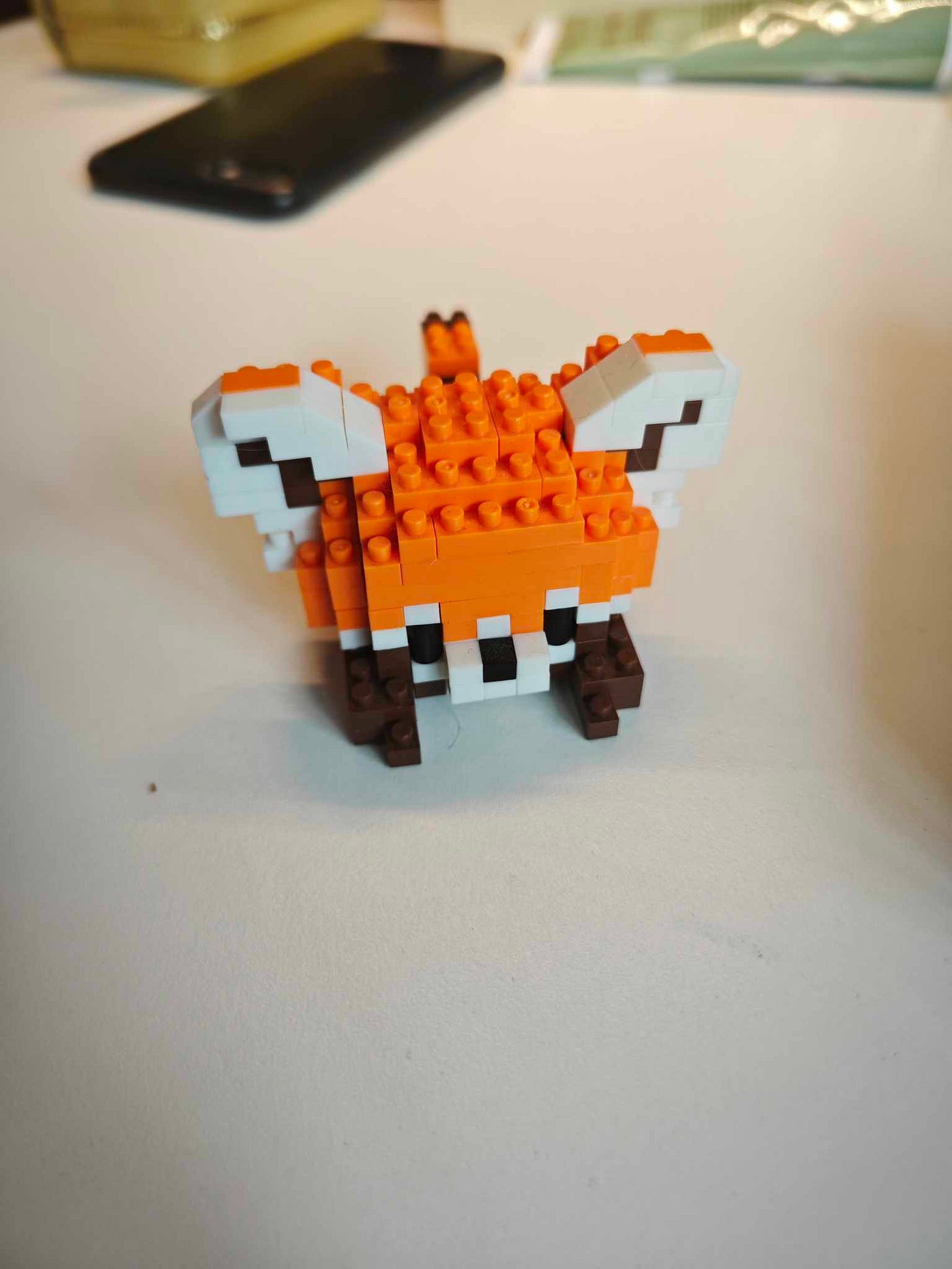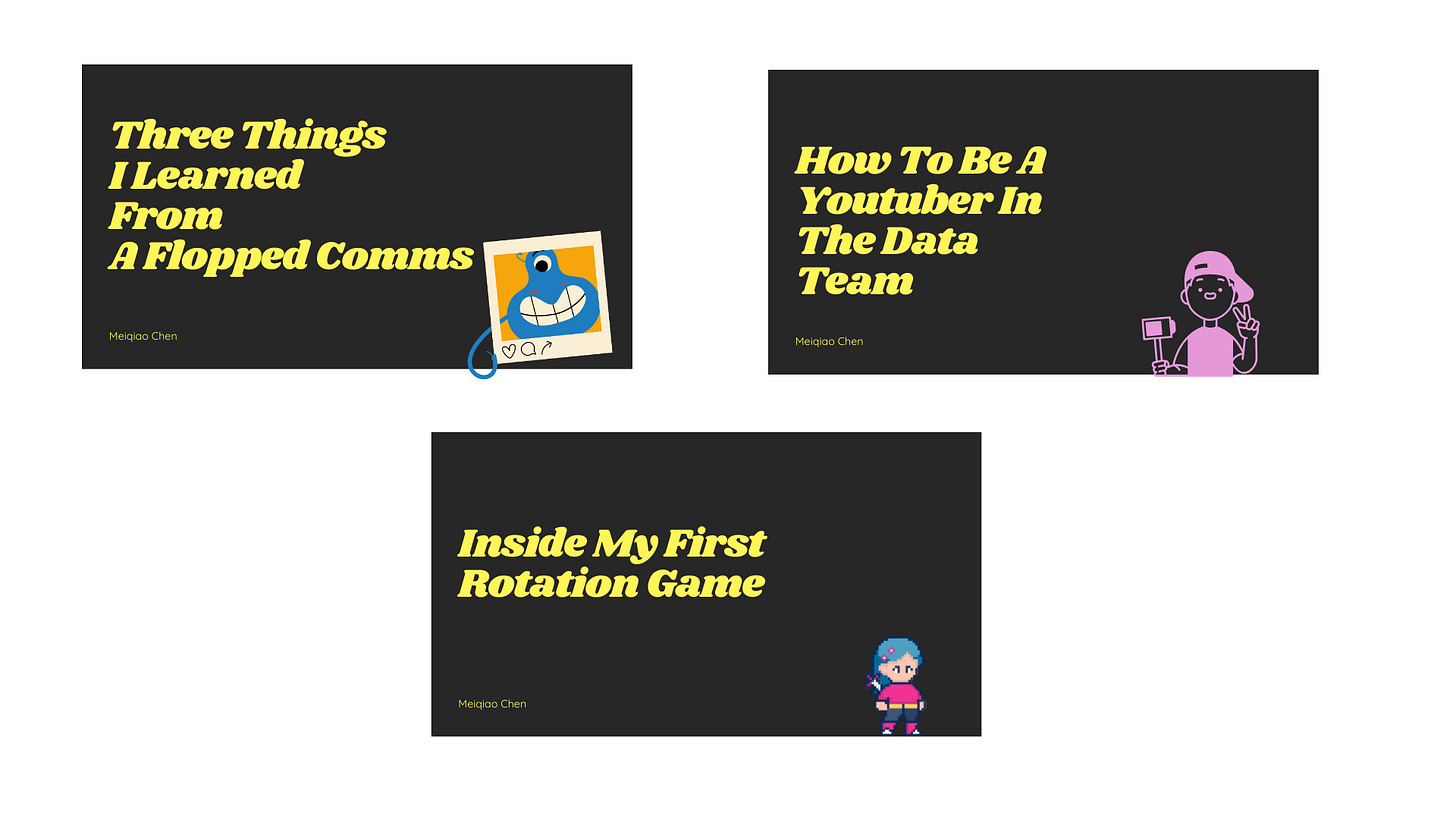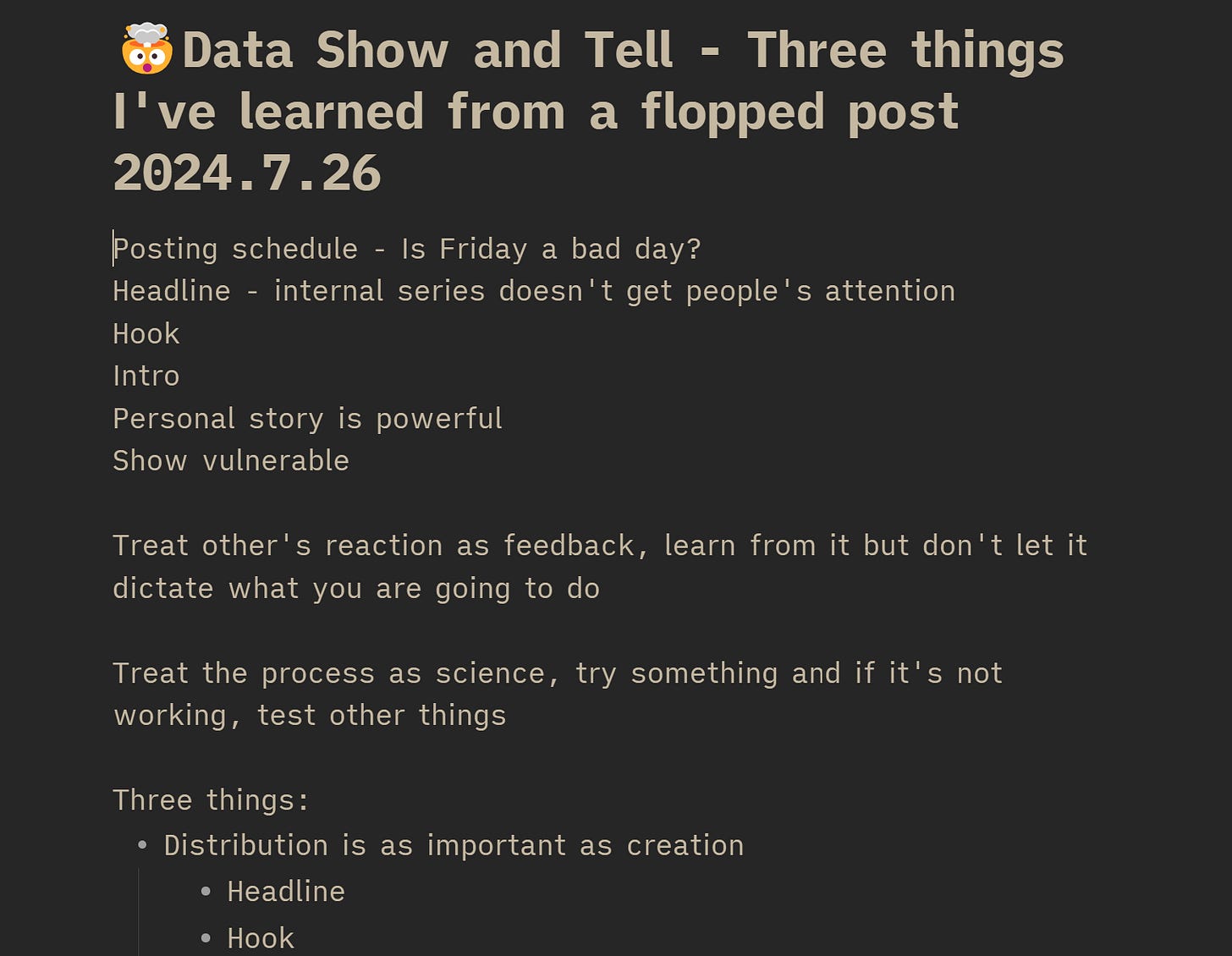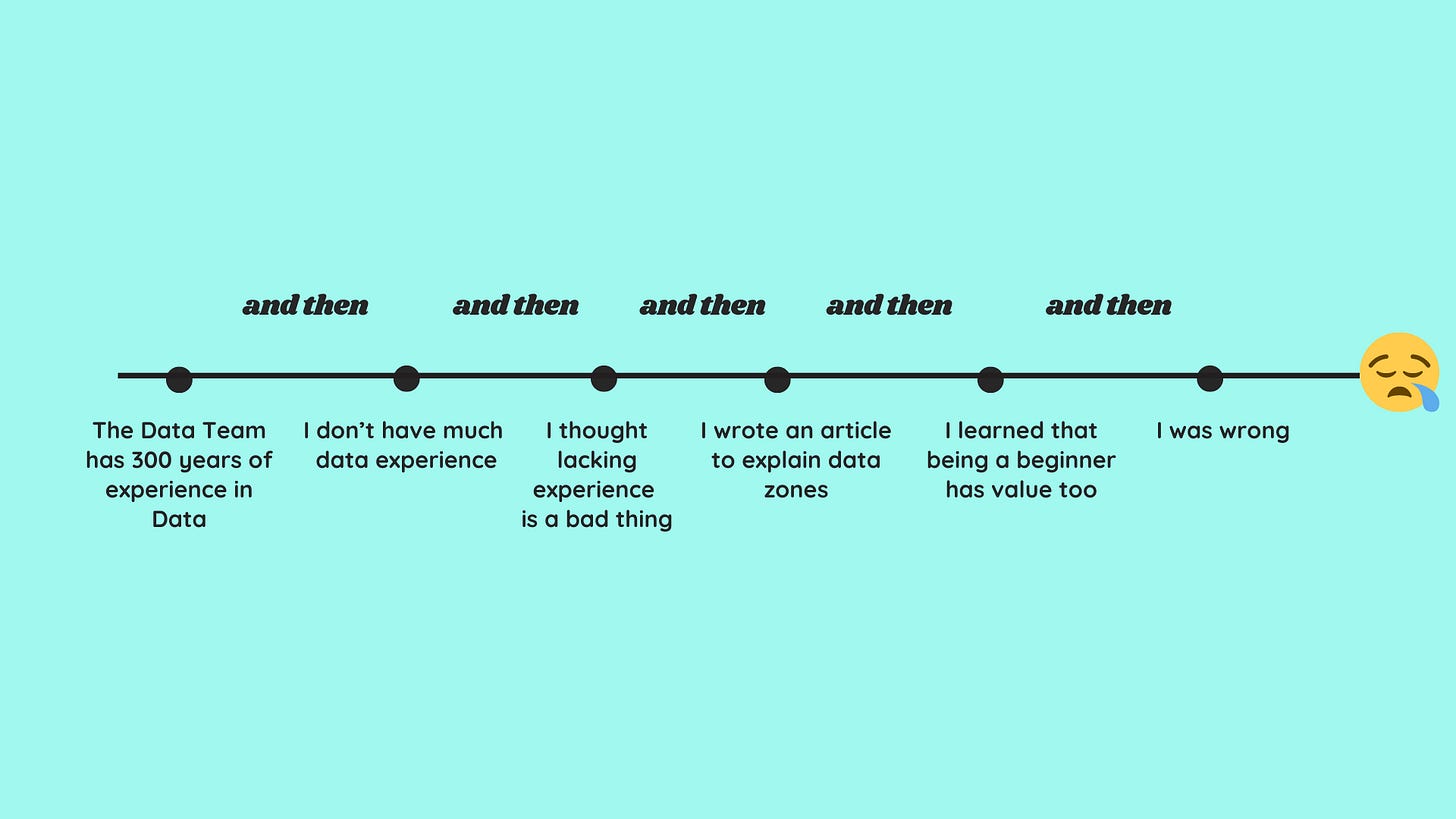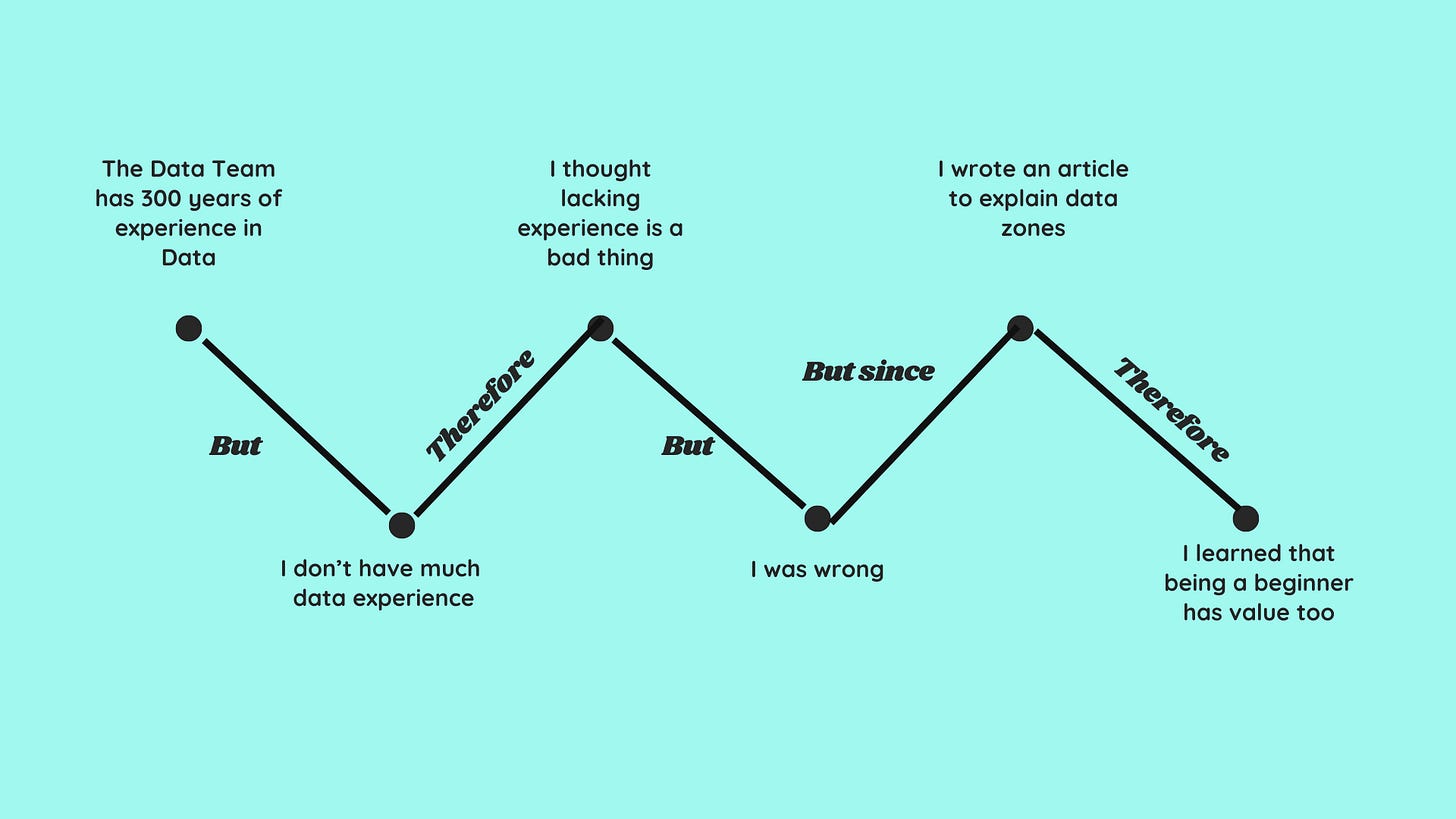👩🎨Creator Update
I built a new learning system and used it to earn my Databricks Professional Engineer certification this past week. I'll share this system in my next issue.
👀Three Myths About Presentations
I've given a few presentations to my team, and many people think I have a unique presentation style, which is very different from the ones they normally see in the business👇
I'll share three common myths I learned from creating presentations.
Myth #1: Creating slides takes most of the presentation preparation time.
Some people think the key to a good presentation is having attractive slides, and that good presenters spend a lot of time creating them.
However, this isn't the case. If we break down a good presentation, it typically consists of two main elements:
The story
The packaging of the story
The story is what you say to the audience, while the packaging refers to how you convey it, including the visual aids you use, such as slides. However, these are just tools to help the audience understand your story.
With tools like Canva and the slide templates it offers, it’s not difficult to put together attractive slides in a short time.
What takes me the most time is crafting the story. Every time I prepare a presentation, 80% of my time goes into creating the story and writing the script.
Myth #2: You need to create from scratch.
If you need to do a presentation next week, what would you do?
You'd probably spend a few hours the day before writing a script from scratch.
Well, I don’t start with a blank page.
If I have a presentation next week, a week or two before that, I’ll create a document called an 'idea dump' and start writing down any ideas that might be related to the presentation👇
So when it’s time to write the script, I already have plenty of ideas on paper, and my task is to link those ideas together to create a cohesive story. It’s like building with LEGO blocks—I've gathered the pieces, and now I just need to figure out how to organize and connect them.
Myth #3: You need an exciting story to create an interesting presentation.
Many people think their stories are boring, and therefore their presentations are boring. But sometimes, it’s not the story itself that’s boring, but how people tell it.
Here’s a method you can use to spice up your story: it’s called the 'But & Therefore Rule,' and it comes from the creators of South Park.
They noticed that boring stories often rely on the phrase 'And then,' while entertaining ones use 'But' and 'Therefore.'
If I use and & then to tell one of my stories, it looks like this, flat and borrring.
If I change to but & therefore, the story looks like this.
By using "but" and "therefore," we give the story a sense of cause and effect, we also create tension and contrast. These are elements that make the story sound interesting.
📝A Quote I Want To Share.
David Perell on creating and editing:
The secret of creative work is to make a lot and publish a little. Don't underestimate the power of giving yourself permission to create junk. Most of what you create will be mediocre or bad. But that's okay. You only have to show people the good stuff. Make 100 things, discard 90, and share the 10 best. Create, create, create. Edit, edit, edit.
📖 What I’m Reading & Watching.
I've been watching tutorials on note-taking tools that I use to build my new learning system. These tools include Obsidian, Milanote, and ReadWise.

